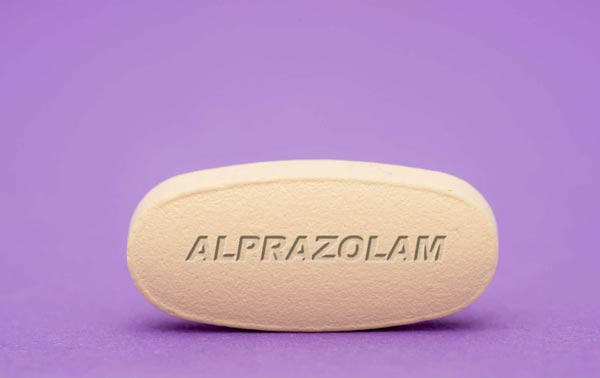Table of Contents
Key Points
- Zoloft® has a half-life of 24-26 hours but stays in the system for much longer.
- An antidepressant in the SSRI family, Zoloft® causes an increase in serotonin in the brain.
- Zoloft® is metabolized by your liver, where it is broken down into active metabolites.
- You can develop substance dependence when taking Zoloft® which can include withdrawal symptoms if it is taken for a longer timeframe and stopped suddenly.
Zoloft® is an antidepressant used to treat depression and other mood and anxiety disorders. The average half-life of Zoloft® is 24-26 hours, and it can stay in your system for 5-7 days. Zoloft® can be detected using a urine, blood, saliva, or hair sample test.
What is Zoloft®?
Zoloft® is a type of prescription medication used to treat major depressive disorder, obsessive-compulsive disorder, panic attacks, post-traumatic stress disorder, premenstrual dysphoric disorder, and social anxiety[1].
Zoloft® belongs to a family of medications called selective reuptake inhibitors (SSRIs). SSRIs increase the amount of serotonin, a neurotransmitter, in your brain.
Zoloft® has a half-life of 24-26 hours and takes 5-7 days to leave the body. A half-life is the amount of time it takes for half the active substance in a drug to leave the body. Zoloft® is detectable in urine, blood, saliva, and hair samples over time.
How is Zoloft® Taken?
Zoloft® is prescribed in 50 mg-200 mg doses. Zoloft® is taken in pill form or as a concentrated liquid diluted before being ingested. Zoloft® is taken with or without food once daily, either in the morning or at night.
For some illnesses, like premenstrual dysphoric disorder, Zoloft® is taken on select days over the course of your cycle.[2]
When you first begin taking Zoloft®, your doctor may gradually increase the dose over a period of weeks.
What Are the Side Effects of Zoloft® Use?

The following Zoloft® side effects are common:
- Headache
- Nausea
- Diarrhea
- Dry mouth
- Increased sweating
Serotonin syndrome is a rare but serious side effect associated with Zoloft® usage. Symptoms of serotonin syndrome include shivering, diarrhea, muscle tightness, and seizure. Serotonin syndrome is deadly if left untreated.
How Long Does it Take For Zoloft® to Leave the System?
The half-life of Zoloft® is 24-26 hours, and it can stay in your system for 5-7 days. Zoloft® is metabolized in the liver, leaving behind desmethylsertraline, an active metabolite of Zoloft®[3]. Desmethylsertraline has a much longer half-life of 56-120 hours[4] and can stay in the body for at least 12 days and up to an entire month.
Factors Affecting How Zoloft® Leaves Your System
The half-life of Zoloft® is not dose-dependent, meaning it is unaffected by the dose you are taking. Liver health plays a large role in how quickly Zoloft® remains in the body. Impaired liver health slows down the metabolization of Zoloft®, which means it takes longer for your body to excrete the drug.
Age is another factor that influences the time it takes for Zoloft® to leave your system. While the half-life for Zoloft® is the same for children and adults, one study[5] found that the half-life of Zoloft® can increase in elderly populations.
Does Stopping Zoloft® Cause Withdrawal Symptoms?
Yes, it’s possible. If you have developed a dependence on the prescription medication, you may experience withdrawal if you stop taking it suddenly.
Zoloft® should only be discontinued under the supervision of a medical professional. Your doctor may choose to gradually decrease your dose. If you have taken Zoloft® for a long period, your withdrawal symptoms may be more intense or last longer.
Common symptoms of Zoloft® withdrawal include:
- Dizziness
- Nausea and vomiting
- Fatigue
- Headaches
- Diarrhea
- Constipation
- Chills or sweating
- Insomnia
- Vivid dreams
- Electrical zaps (also called “brain zaps”)
- Mood swings
If you experience seizures, suicidal thoughts, muscle rigidity or a high fever, these are serious symptoms and you should seek medical attention immediately.
Can You Be Tested for Zoloft®?
Although testing for Zoloft® is rare, your doctor may ask you to complete one of the following tests if drug misuse is suspected.
Urine Test
A urine sample test is used to determine whether Zoloft® is present in urine. Your sample will likely be taken at a doctor’s office, at work, or at the lab testing site. On average,
Zoloft® is detectable in urine for up to four days.
Blood Test
Blood tests are used less frequently but provide more accurate results than other types of tests. A blood test can detect Zoloft® for up to eight hours after it was last taken. If you have taken Zoloft® for an extended period of time, a blood sample might show positive results for several days.
Saliva Test
Oral fluid screening is a less common method for detecting Zoloft®. A swab is placed against the cheek to absorb saliva, which is then tested for the presence of Zoloft®. Zoloft® remains detectable in saliva for up to two days.
Hair Test
Hair follicle tests for Zoloft® can show use over the last 90 days. Hair is taken from the head close to the root or from any other unshaved part of the body.[/vc_column_text][/vc_column]
Frequently Asked Questions
Below are some of the most frequently asked questions about sertraline.
The Heights Treatment Editorial Guidelines
There is a vast amount of misinformation online especially as it relates to health & wellness. We have made it our mission at The Heights Treatment to provide accurate, medically sound content that has been medically reviewed by a doctorate level clinician so that you can trust the information contained within our website.





